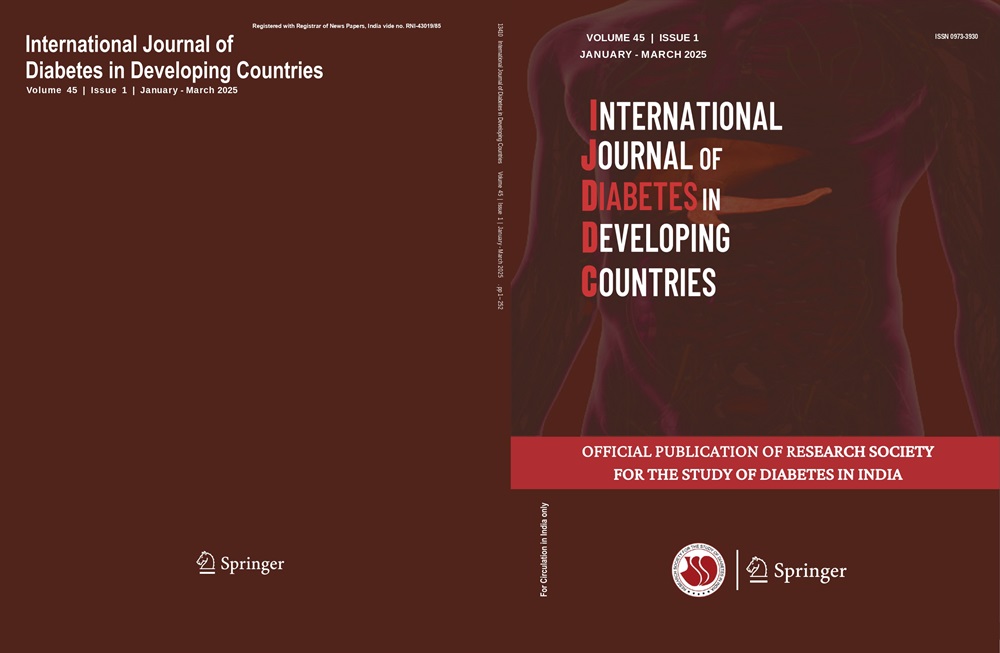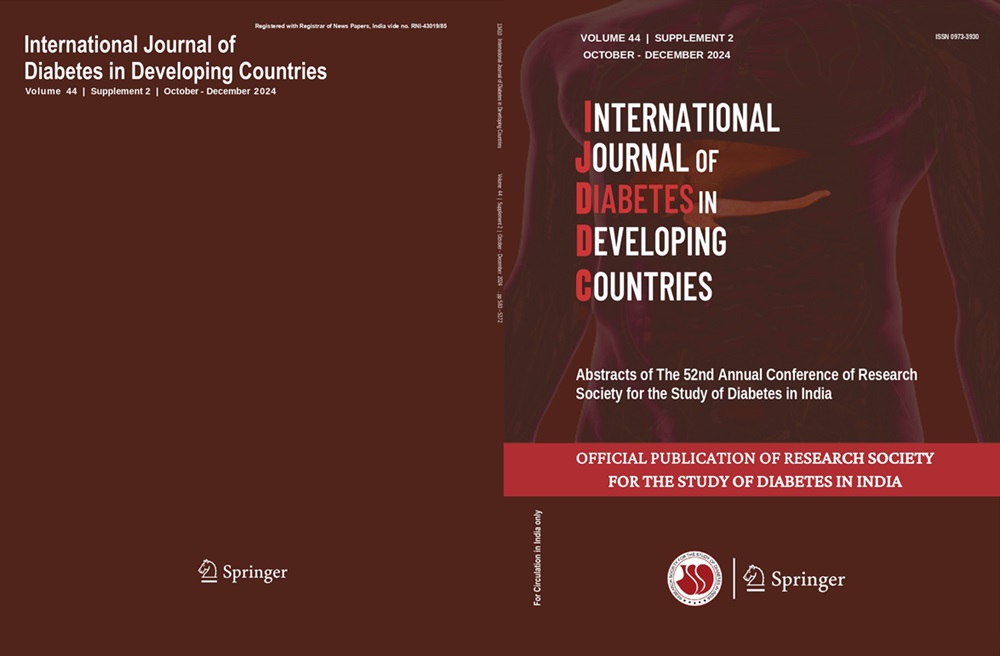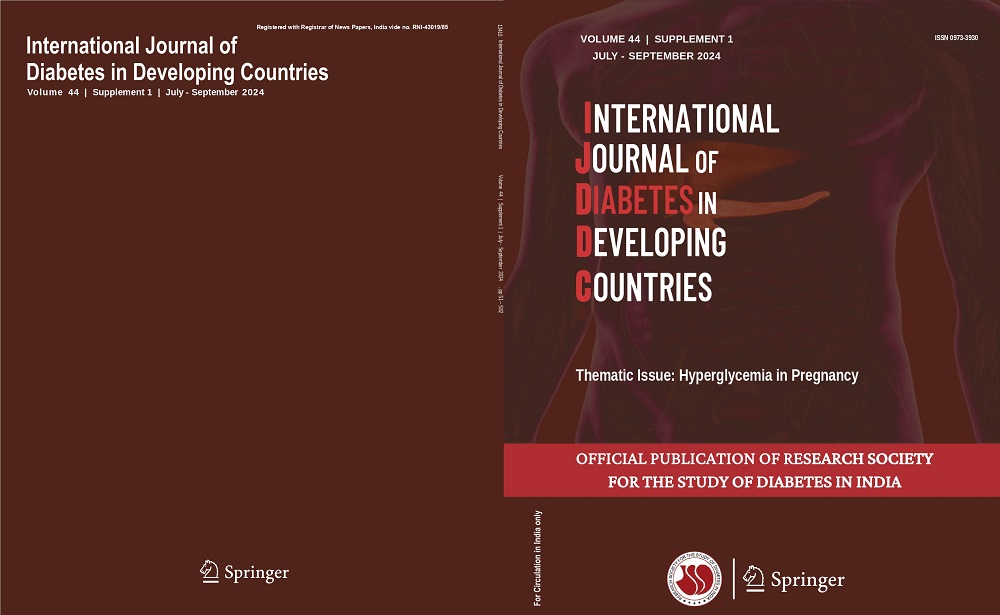Rajeev Chawla
Keywords
Screen for DPN-save limbs and lives!
Diabetes mellitus (DM) is one of the most common causes of neuropathy worldwide. Prevalence of PN in patients with diabetes (diabetic peripheral neuropathy) ranges from around 10.5 to 32.2% in various studies across India, and up to 50% patients will eventually develop neuropathy during the course of their disease according to Western literature [1]. There is much higher prevalence of DM in India compared to the West [2].
PN affects the sensory, motor, and autonomic nervous systems, with sensory symptoms being the most common, with varying nature (including pain, numbness, tingling, and burning) and type (including shooting, chronic, and electric shock). Symptoms and effects can be progressive and lead to ambulatory difficulties and loss.
Study by Mohamad Sabaghan et al. [3] published in this issue “Diabetic peripheral neuropathy screening and the related risk factors to its prevalence in people with type 2 diabetes” is a cross-sectional study conducted on 453 type 2 diabetes patients to screen patients and to identify neuropathy and factors affecting its development. The participants were examined by physician in terms of signs of DPN and other complications.
The prevalence rate of DPN was 26.2%, of which 41.3% was in the high-risk group in terms of diabetic foot ulcer. Also, diabetic foot ulcers were diagnosed in 9.2% of them. On the other hand, in patients without DPN, 3.5% had diabetic foot ulcers. Of note, 79.8% of the patients with DPN were previously undiagnosed. In addition, age, duration of diabetes, HbA1c, hyperlipidaemia, and hypertension were associated with prevalence of DPN.
Study by Chawla et al. [4] published in The Internet Journal of Family Practice has validated use of Neuropathy Symptoms Score (NSS) And Neuropathy Disability Score (NDS) in the Clinical Diagnosis Of Peripheral Neuropathy In Middle Aged People With Diabetes.
This study recommended that neurological examination like NSS and NDS can be an important bed side tool in the clinics for early diagnosis of DPN with a sensitivity of 71.1% and specificity of 90%. DPN was associated with poor glycaemic control in the study group and had a strong co-association with other complications like DR (44.1% vs. 19.2%) and microalbuminuria 61.3% vs. 38%. This bed side examination is simple, acceptable, reproducible, and validated as per this study and can help in predicting DPN early averting more serious diabetic footulcers and amputations.
Fungal foot infections are common and increase the risk of diabetic foot ulcers (DFU) in patients with diabetes. Study by Selda Celik et al. [5] published in the present issue has shared a single-center experience about clinical features of type 1 and type 2 diabetes patients with suspected fungal foot infections (SFFI). A total of 816 patients with diabetes were included in this study. Patients were divided into two groups according to the presence of clinical SFFI (group 1; SFFI ( +); n = 487 and group 2; SFFI (−); n = 329). Groups were compared in terms of demographic characteristics, disease information (type and duration of diabetes, diabetes treatment, presence of retinopathy, nephropathy, neuropathy, DFU, and hypertension), HbA1c level, daily foot care activities (frequency of foot washing, keeping toes dry after washing, religious habits, etc.), and skin condition. Signs of SFFI were detected in 59.7% of the patients. Type 2 diabetes, insulin treatment, female sex, and skin dryness were significantly more common among patients with SFFI. Retinopathy, neuropathy, and hypertension were more prevalent in patients with SFFI and correlated with age and dryness of skin. This study concluded that patients at risk of SFFI should be educated about regular nail and skin care, including prevention of dry skin conditions for early prevention of subsequent diabetic foot problems.
A comparative study of various dressing techniques in diabetic foot ulcers in the Indian population by Amit Kumar Yadav et al. [6] published in this issue have shared a single-center experience to evaluate and compare the efficacy of conventional dressing, foam dressing, and vacuum-assisted closure (VAC) in the management of diabetic foot ulcers (DFUs). The duration of treatment, number of debridement, need for the secondary procedure, cost of treatment, and duration of hospital stay were compared between the three groups. The study concluded that VAC dressing is the best option among the available dressing modalities in terms of faster healing and a short hospital stay. Foam dressings do provide an economically viable option with better results than conventional dressings.
A small pivotal event in a patient with absent peripheral sensation may initiate the causal chain to amputation. In nearly half the patients, this event happens to be footwear-related and is usually followed by ulceration and faulty wound healing in 73% of patients. Each year, thousands and thousands of individuals with diabetes undergo amputation, resulting in substantial cost to the health care system and to themselves.
All these clinical studies highlight the need and importance of simple bed side examination tools to diagnose DPN early making it possible to intervene timely, thus averting foot ulcers, leg loss, and amputation.
Reference
1. Maser RE, Steenkiste AR, Dorman JS, Nielsen VK, Bass EB, Manjoo Q, et al. Epidemiological correlates of diabetic neuropathy. Report from Pittsburgh Epidemiology of Diabetes Complications Study. Diabetes. 1989;38:1456–61.
2. Pickup J, Wilham G. Epidemiology of diabetes. In: Guikshank K, editor. Textbook of diabetes. New York: Blackwell Science; 1991.
3. Sabaghan M, Ataee S, Ataee M, Tebyanian M, Afrashteh S, Daneshi N. Diabetic peripheral neuropathy screening and the related risk factors to its prevalence in people with type 2 diabetes. Int J Diabetes Dev Countr.https://doi.org/10.1007/s13410-022-01165-1.
4. Chawla A, Bhasin GK, Chawla R. Validation of neuropathy symptoms score (NSS) and neuropathy disability score (NDS ) in the clinical diagnosis of peripheral neuropathy in middle aged people with diabetes. Internet J Fam Prac. 2013;12
5. Celik S, Bagdemir E, Purisa S, Uzum AK, Satman I, Yalin GY. Clinical features of type 1 and type 2 diabetes patients with suspected fungal foot infections: a single-center experience. Int J Diabetes Dev Countr.https://doi.org/10.1007/s13410-022-01147-3.
6. Yadav AK, Mishra S, Khanna V, Panchal S, Modi N, Amin S. Comparative study of various dressing techniques in diabetic foot ulcers in the Indian population: a single-centre experience. Int J Diabetes Dev Countr.https://doi.org/10.1007/s13410-022-01163-3.




